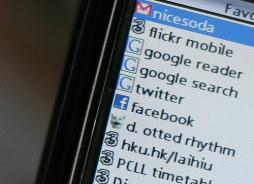mobile web design
Posted by PrabhasPokharel on Sep 22, 2009
W3C MobileOK Checker data sheet 5636 Views
Organization that developed the Tool:
Main Contact:
Dominique Hazael-Massieux
Problem or Need:
All elements of regular html are not appropriate for mobile phone web browsers (which have small screens, hard input methods, and usually low bandwidth). This tool lets you check whether a site is appropriate to be viewed on mobile phones.
Brief Description:
This checker performs various tests on a Web Page to determine its level of mobile-friendliness. The tests are defined in the mobileOK Basic Tests 1.0 specification. A Web Page is mobileOK when it passes all the tests. Please refer to the About page for more details.
Tool Category:
App resides and runs on a server
Key Features :
Checks whether your site is mobile ready; Given suggestions for improvement if not. Uses W3C's mobileOK Basic Tests 1.0 specification
Platforms:
All phones/Mobile Browser
Is the Tool's Code Available?:
URL for license:
http://dev.w3.org/cvsweb/2007/mobileok-ref/LICENSE.html?rev=1.1&content-type=text/x-cvsweb-markup
Is an API available to interface with your tool?:
Posted by KatrinVerclas on Jan 16, 2009
Data from Informa indicates that by 2010 half of the planet's population will have access to the Internet through a mobile device. Should you make your website mobile? We have heard recently from a number of organizations contemplating whether they should build a mobile site. Following is an overview of some points to consider and resources to draw on as you consider a mobile web presence.
A bit of background: There are now 4 billion mobiles phone subscribers around the world, according to the ITU, far outpacing Internet users worldwide. GSMA, the industry group for telecom companies, reports that more than 80% of the World population is currently covered by a GSM network.
This means that mobiles have become the most ubiquitous communication device in human history. It also means that a majority of the world's population will access the web via their mobile phones. And this means that organizations around the world need to think about what this means for their users, audience, and websites.
